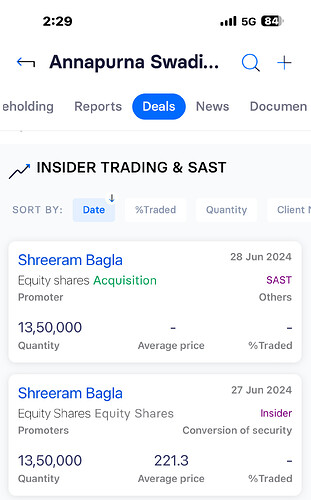Arihant Capital analysis of the HNG acquisition and buy recommendation issued.
Posts in category Value Pickr
DIY Momentum QnA and Discussion (01-07-2024)
What is good rebalance frequency 7,15,30, 90 days?
The rebalance frequency plays a major role in RAR (Risk adjusted Returns), the above mentioned frquencies hav their own pro and cons kind go throgh the same:
Choosing the optimal rebalancing frequency for a momentum portfolio depends on balancing transaction costs, capturing momentum, and managing risk. Here’s a comparison of different rebalancing frequencies based on various studies and practical considerations:
7 Days (Weekly)
Pros:
- Captures Short-Term Trends: Quickly adapts to changes in stock performance, capturing short-term gains.
- Reduces Drawdowns: Minimizes the impact of losing positions by frequently exiting underperforming stocks.
Cons:
- High Transaction Costs: Frequent trades increase costs, which can erode returns.
- Tax Implications: More frequent trading may lead to higher short-term capital gains taxes.
- Increased Volatility: High turnover might increase portfolio volatility.
15 Days (Bi-Weekly)
Pros:
- Balance of Responsiveness: Provides a middle ground between capturing short-term trends and managing transaction costs.
- Reduced Volatility: Slightly lower turnover compared to weekly rebalancing, potentially reducing volatility.
Cons:
- Still High Costs: Transaction costs and tax implications are still relatively high.
30 Days (Monthly)
Pros:
- Optimal Balance: Many studies suggest that monthly rebalancing captures momentum effectively while managing costs. Jegadeesh and Titman (1993) found monthly rebalancing to be effective for momentum strategies (Smallcase).
- Lower Transaction Costs: Compared to weekly or bi-weekly, it significantly reduces transaction costs and tax implications.
- Practical for Individual Investors: Easier to manage and less time-consuming.
Cons:
- May Miss Short-Term Trends: Less responsive to very short-term market changes compared to weekly rebalancing.
90 Days (Quarterly)
Pros:
- Low Transaction Costs: Minimizes transaction costs and tax implications.
- Less Time-Consuming: Easier to manage with fewer trades.
Cons:
- Delayed Response: Slower to respond to market changes, potentially missing short-term momentum shifts.
Empirical Evidence and Practical Recommendations
- Jegadeesh and Titman (1993): Found that holding periods of 3 to 12 months produced significant abnormal returns for momentum strategies (Smallcase).
- Asness, Moskowitz, and Pedersen (2013): Showed that momentum strategies generally perform well, but net returns after transaction costs can vary based on rebalancing frequency (smallcase).
- Lesmond, Schill, and Zhou (2004): Highlighted the impact of transaction costs on high-frequency trading strategies (Smallcase).
Conclusion
For most individual investors, a 30-day (monthly) rebalancing frequency is generally optimal. It balances the need for timely adjustments with manageable transaction costs and practical implementation. However, if you are dealing with a highly volatile market or have very low transaction costs, you might experiment with shorter frequencies like 7 or 15 days. Conversely, if minimizing costs is a priority and you can tolerate some lag in responsiveness, 90 days could be suitable. Ultimately, backtesting your strategy with different frequencies can help determine the best fit for your specific goals and market conditions.
Sanghvi Movers (01-07-2024)
Sanghvi mover’s Capex is to acquire/purchase Cranes.
Sanghvi Movers (01-07-2024)
Sanghvi mover’s Capex is to acquire/purchase Cranes.
Annapurna Swadisht Ltd – A Swadisht FMCG investment? (01-07-2024)
Warrants are like options where the warrant holder has an option to buy equity shares at a specified price on a specific date. The promoter Bagla has exercised that option and converted the warrants into shares. In shortz it’s positive.
Annapurna Swadisht Ltd – A Swadisht FMCG investment? (01-07-2024)
Warrants are like options where the warrant holder has an option to buy equity shares at a specified price on a specific date. The promoter Bagla has exercised that option and converted the warrants into shares. In shortz it’s positive.
Atma Nirbhar Bharat – Stock opportunities (01-07-2024)
Any views on adding GRSE (Garden Reach) at 2300 levels? Volumes are pretty strong. Contemplating of adding it despite sky-high valuations as I would essentially want to bet on hot stocks.
Atma Nirbhar Bharat – Stock opportunities (01-07-2024)
Any views on adding GRSE (Garden Reach) at 2300 levels? Volumes are pretty strong. Contemplating of adding it despite sky-high valuations as I would essentially want to bet on hot stocks.

